- News
- Reviews
- Bikes
- Components
- Bar tape & grips
- Bottom brackets
- Brake & gear cables
- Brake & STI levers
- Brake pads & spares
- Brakes
- Cassettes & freewheels
- Chains
- Chainsets & chainrings
- Derailleurs - front
- Derailleurs - rear
- Forks
- Gear levers & shifters
- Groupsets
- Handlebars & extensions
- Headsets
- Hubs
- Inner tubes
- Pedals
- Quick releases & skewers
- Saddles
- Seatposts
- Stems
- Wheels
- Tyres
- Tubeless valves
- Accessories
- Accessories - misc
- Computer mounts
- Bags
- Bar ends
- Bike bags & cases
- Bottle cages
- Bottles
- Cameras
- Car racks
- Child seats
- Computers
- Glasses
- GPS units
- Helmets
- Lights - front
- Lights - rear
- Lights - sets
- Locks
- Mirrors
- Mudguards
- Racks
- Pumps & CO2 inflators
- Puncture kits
- Reflectives
- Smart watches
- Stands and racks
- Trailers
- Clothing
- Health, fitness and nutrition
- Tools and workshop
- Miscellaneous
- Buyers Guides
- Features
- Forum
- Recommends
- Podcast
review
£2,999.00
VERDICT:
Aero road bike that offers speed, efficiency and a strong spec
Weight:
8,480g
Contact:
At road.cc every product is thoroughly tested for as long as it takes to get a proper insight into how well it works. Our reviewers are experienced cyclists that we trust to be objective. While we strive to ensure that opinions expressed are backed up by facts, reviews are by their nature an informed opinion, not a definitive verdict. We don't intentionally try to break anything (except locks) but we do try to look for weak points in any design. The overall score is not just an average of the other scores: it reflects both a product's function and value – with value determined by how a product compares with items of similar spec, quality, and price.
What the road.cc scores meanGood scores are more common than bad, because fortunately good products are more common than bad.
- Exceptional
- Excellent
- Very Good
- Good
- Quite good
- Average
- Not so good
- Poor
- Bad
- Appalling
The Giant Propel Advanced Disc is an efficient, firm-feeling road bike with aerodynamics designed specifically with disc brakes in mind. It's not the lightest bike available for this kind of money but it's fast whether you're soloing off the front or sprinting for the line.
- Pros: Stiff and efficient, strong aero credentials, excellent disc brakes
- Cons: Not especially lightweight, you're tied into using Giant's handlebar and stem
Rim brake versions of the Propel have been in the Giant line-up for years, but this is the first time that disc brakes have been added. Although rim brake Propels are still available, they're all based around the previous frame design; the new version is disc brake only.
> Find your nearest dealer here
The Propel Advanced Disc might not lurch forward like some lightweights do when you accelerate out of a slow turn, but that's not what aero road bikes are all about. It's designed with efficiency in mind, both in terms of aerodynamics and stiffness. The aero side of things is difficult to discern (I'll cover aerodynamics in a bit) but this bike certainly feels stiff when you stamp on the pedals, with very little flex to speak of even when you're standing up and giving it everything you have.
This stiffness extends to the front end with a head tube that features Giant's Overdrive 2 design with a 1 1/4in upper bearing and a 1 1/2in lower bearing. Giant's own alloy Contact SL Aero handlebar doesn't flex much when you haul on it either, which is notable because some aero options do thanks to their slim profile.
You'd have to say that the Propel Advanced Disc provides quite a firm ride, and that might or might not be to your taste. By that I don't mean that it's uncomfortable – it's not that – but it is, yeah, firm. This isn't a gran fondo or endurance bike, it's a race bike (even if you don't race it) and that comes through in the feel.
That said, I got on fine with Giant's Contact Forward saddle with a composite base that flexes enough to take the edge off things, and Giant's own 25mm Gavia Race 1 tyres are set up tubeless so you can run them at lower pressures than you otherwise would without the danger of pinch flatting if you hit a pothole.
The Propel Advanced Disc treads the middle ground in terms of manoeuvrability, flicking around ably when you want to move within a group or change your line on a fast descent, and it isn't too much of a handful in crosswinds compared to other aero bikes I've ridden, partly thanks to Giant speccing a shallower-section (42mm) SLR 1 Aero Disc wheel at the front than at the back (65mm).
In terms of aerodynamics, Giant says that the Propel Disc had a detailed development phase involving its engineers and experts at the Aero Concept Engineering facility in Magny-Cours, France. They used a moving mannequin and spinning wheel on the bike in the wind tunnel in order to get accurate data.
The result is a bike that features a new truncated ellipse aerofoil profile. You probably know the deal by now because it's a formula followed by other brands: designers come up with an aerodynamically efficient shape and chop the trailing edge of the profile off square to save weight, improve handling and stick within UCI rules, while maintaining most of the wind-cheating performance.
This aerofoil profile is used for the fork legs, most of the frame elements and the seatpost. Giant uses other features that we've come to expect of aero road bikes over the years, such as a hidden seatpost clamp – it's a wedge system that sits within the top tube/seat tube junction – a seat tube that's cut away around the leading edge of the rear wheel, and a horizontal top tube.
One other key feature is Giant's own aero handlebar and stem system that leaves no exposed hydraulic brake hose and just 5cm of gear cable showing on either side (between exiting the handlebar and entering the stem). I'd explain how it works but a picture paints a thousand words...
Essentially, Giant specs an aero handlebar (the dimensions of the tops are 56mm x 26mm) and has added a composite cover to the top of the stem. The gear cables and brake hoses run under there, then through some rubber shrouding that sits behind the headset spacers and into the frame. The stem cover is held in place by 2mm hex bolts that are a little fiddly, but nothing you can't handle.
The other important fact regarding aerodynamics is that, as mentioned, the new Propel framesets are disc brake only. Giant says it found that with proper integration a disc brake design can be more aerodynamically efficient than a rim brake bike.
'This is because the location of traditional callipers (either in front or behind the fork crown/legs) creates 'dirty' air,' says Giant. 'Opening up the fork crown area (by placing the disc-brake callipers down at the hub) means that the air hitting the new disc-brake calliper has already been disrupted by the leading edge of the tyre/wheel. This effect is further enhanced by an asymmetric fork that helps smooth out airflow over the calliper.'
There are three Propel Disc platforms and various builds, and here are the main features of each:
- The top-level Propel Advanced SL Disc has a frame and fork made from Giant's Advanced SL-grade carbon composite, an integrated seatpost and a Contact SLR Aero composite integrated handlebar and stem. The fork is a one-piece construction.
- The Propel Advanced Pro Disc has an Advanced-grade carbon composite frame and fork, a non-integrated seatpost, a Contact SLR aero composite handlebar and a Contact SL Aero alloy stem. The fork is full-carbon but it's not a one-piece construction.
- The Propel Advanced Disc, which is the one we have here, is also made from Advanced-grade composite, but the fork steerer is alloy, as are the Contact SL Aero handlebar and stem.
Putting the integrated seatpost to one side, the frame and fork profiles are identical across the range. Giant doesn't say that the Propel will save you a certain amount of time over a given distance, but does say that it is the fastest disc brake aero road bike it has tested at all wind angles except zero (when the apparent wind is coming from straight ahead).
The only times you'll get a zero apparent wind angle are when the air is completely still, when you're riding directly into a headwind and when the wind is coming from directly behind you. Giant's engineers reckon that this is rare and claim that the Propel is the fastest bike in its category in real world conditions. Giant also says that the Propel has a lower drag coefficient at a wider range of yaw angles than its non-disc brake predecessor.
Geometry
The Giant Propel Advanced Disc is built to an aggressive geometry, which is what you'd expect of a bike designed for speed. We have the M/L model here with a 545mm seat tube, a 570mm top tube and a 165mm head tube. The stack is 562mm, the reach is 398mm, and both the head angle and the seat angle are 73 degrees.
The height of the front end is boosted by a whopping 5cm of headset spacers. Chances are you'll want to drop that, at least a little, by chopping down the fork steerer. This requires that you take the top cover off the stem in order to access the headset's top cap. You can only refit the cover if the top of the steerer sits flush (or nearly flush) with the top of the stem – but you can run the stem without the cover for a while if you just want to try out a couple of different handlebar positions for size.
While we're talking about such things, the aluminium alloy Giant Contact SL Aero stem is 110mm on M/L versions of the Propel, and it will soon be available aftermarket (£150) in 80-140mm lengths. You don't get a choice of angles so it's just the number of headset spacers that determines handlebar height. It's down to the individual dealer whether they'll swap to a different length stem if you want one. You don't need to disconnect the cables or brake hoses in order to swap the stem, by the way.
The unique clamp shape means that with this stem you're tied to using a Giant handlebar for the duration (it's 42cm wide on our M/L size bike) because nothing else will fit (the Giant Contact SL Aero bar on the Propel Advanced Disc is alloy, although a composite SLR version is available in 40cm, 42cm and 44cm widths for £249.99). The cynical among you might figure that Giant does this to keep you true to the brand. Maybe, but on a bike that's all about aerodynamics it also makes sense to use components that have been specifically designed to work together as a complete system to minimise drag.
That's fine if you get on well with this bar, and I did. I liked the ergonomic shape of the drop and didn't find my wrists hitting the tops while I was down there. I also found the deep, aero section tops really comfortable during climbing.
However, you can't alter the angle of the handlebar and if you don't like the bar's shape or level of stiffness you're stuck, so make absolutely sure that the Contact SL Aero bar works for you before handing over your cash.
The unusual shape of the handlebar means that although you can fit a rubber-backed bike computer mount with O-rings, you can't clamp an out-front mount to it. Instead, Giant gives you an out-front mount that fixes to bolts that hold the stem's front plate in place. It's a neat solution but the mount currently has inserts only for Garmin Edge and Giant Neostrack computers and Giant doesn't have plans to extend that to cover a Wahoo Elemnt Bolt, for example. The last we heard, Giant was going to speak to RaceWare to see if there was enough demand for it to produce other inserts, and you can buy third party out-front mounts that fit to stem bolts for other devices.
Wheels and tyres
As mentioned above, Giant specs its own SLR 1 Aero Disc wheels, the rear one with a 65mm-deep composite rim to reduce drag, the front one with a shallower 42mm-deep rim for greater stability in crosswinds. Makes sense. The rims are the same as on Giant's top-level SLR 0 wheels but with lower end DT Swiss hubs. Both the front and rear wheels are 12mm thru-axle.
I went on a couple of really windy rides during testing and only noticed a significant effect on handling compared to shallow section rims when descending at [checks Strava] about 40mph with the wind gusting across me. Of course, some people (and their bike positions) are more susceptible to being thrown off-line than others.
The SLR 1 Aero Disc wheels and Giant's own Gavia Race 1 tyres come set up tubeless. Periodically top them up with sealant and you should experience far fewer punctures than normal. There's enough space for you to swap the 25mm tyres for 28s if you fancy putting more air between yourself and the road.
Ultegra groupset
The Propel Advanced Disc is built up with a second-tier Shimano Ultegra groupset which I won't cover in depth here, but it essentially performs like top-level Dura-Ace with the addition of a little weight. The 52/36-tooth chainset is matched to an 11-28-cassette, which doesn't give you the widest range of gears ever but it's spot on for a bike of this type, and the Shimano PressFit bottom bracket hasn't creaked at all during testing.
The Shimano Ultegra hydraulic disc brakes put in a reliable performance in all weather conditions. Giant specs 140mm rotors front and rear (it does this across its road range) which deliver marginally less stopping power than 160s and will heat up quicker, but I've got along just fine without giving them a second thought.
Good value?
Of the aero road bikes we've reviewed here on road.cc recently, Bianchi's Aria Disc was £3,350, another model for which the manufacturer doesn't publish any specific aero figures (whatever those figures are worth!). The Aria Disc has a carbon frame and the version we reviewed had a Campagnolo Potenza groupset, although it's also available in a Shimano Ultegra build for £3,150.
The rim brake Orbea Orca Aero M20 Team that we reviewed was built up with an Ultegra groupset and DT Swiss PR 1600 Spline 32 wheels, and was priced at £3,632. On the face of it (and this is always dangerous), the Giant is better value for money.
> Buyer's Guide: 15 of the best & fastest aero road bikes
Overall, Giant presents a compelling package here. The Propel Advanced Disc is fast and efficient with excellent disc brakes and very good wheels, unlike some rivals that come fitted with place-holder wheels that you'd want to upgrade in order to realise the bike's full potential. It does have a firm feel and you can't switch to a different handlebar and stem combo, but if you're happy with those things then this is a bike that'll give you a boost in your pursuit of speed.
Verdict
Aero road bike that offers speed, efficiency and a strong spec
road.cc test report
Make and model: Giant Propel Advanced Disc
Size tested: M/L
About the bike
State the frame and fork material and method of construction. List the components used to build up the bike.
Giant lists:
Sizes S, M, ML, L
Colours Matt Neon Red / Matt Black
Frame Advanced-Grade Composite, Disc
Fork Advanced-Grade Composite, Hybrid OverDrive 2 Steerer
Handlebar Giant Contact SL Aero, alloy
Stem Giant Contact SL Aero, alloy
Seatpost Giant Vector Composite
Saddle Giant Contact (Forward)
Pedals Not Included
Shifters Shimano Ultegra 22 speed
Front Derailleur Shimano Ultegra
Rear Derailleur Shimano Ultegra
Brakes Shimano Ultegra Hydraulic Disc
Brake Levers Shimano Ultegra Hydraulic
Cassette Shimano Ultegra, 11x28
Chain KMC X11EL-1
Crankset Shimano Ultegra, 36/52
Bottom Bracket Shimano PressFit BB72
Rims Giant SLR 1 Aero Disc Wheel System 42mm Front, 65mm Rear
Hubs Giant SLR 1 Aero Disc Wheel System 12mm Thru-Axle
Spokes Giant SLR 1 Aero Disc Wheel System
Tyres Giant Gavia Race 1 Tubeless, 700x25, Folding
Extras Computer Mount, Tyre Sealant
Tell us what the bike is for
It's an aero road bike, designed for racing – although, of course, you don't have to race it. No one's going to come round and check!
Giant says, "On the attack, in a sprint, or cornering at speed, aero speed meets total control in this all-new disc-brake solo flyer.
"This all-new aero road bike minimises drag so you can accelerate and sprint faster. It also introduces full disc-brake integration for more confidence and control in all types of weather and conditions. Engineered with AeroSystem Shaping technology and Advanced-grade composite, it delivers proven aero performance and one of the lightest frames in its category. New integrated disc brake technology includes flat-mount calipers and thru-axles for wheel stiffness and streamlined performance. The lightweight, easily adjustable Vector composite seatpost further minimises drag. It all adds up to a race-ready machine that helps you leave the competition behind. Tubeless Ready."
Frame and fork
Overall rating for frame and fork
9/10
Tell us about the build quality and finish of the frame and fork?
The standard is high throughout.
Tell us about the materials used in the frame and fork?
The frame is made from what Giant calls its Advanced-grade carbon composite. The fork is made from Advanced-grade carbon composite too with an alloy/composite hybrid OverDrive 2 steerer with a 1 1/4in upper bearing and 1 1/2in lower bearing.
Tell us about the geometry of the frame and fork?
It's a race (as opposed to an endurance) geometry. We have the M/L model with a 545mm seat tube, 570mm top tube and 165mm head tube. Both the head angle and seat angle are 73°.
How was the bike in terms of height and reach? How did it compare to other bikes of the same stated size?
The reach is about what you'd expect. The front end on our review bike was fairly high because of 5cm of headset spacers. If it's your own bike you can easily remove some of the spacers and chop down the fork steerer to get a lower front end.
Riding the bike
Was the bike comfortable to ride? Tell us how you felt about the ride quality.
It feels quite firm. Some people will like that, some won't. You can run the tubeless tyres at a lower pressure for a ride that's a little more forgiving, or swap for tyres in a 28mm width.
Giant says that the integrated seatpost of the high-level Giant Propel Advanced SL provides more comfort – but it's not as convenient when it comes to travel.
Did the bike feel stiff in the right places? Did any part of the bike feel too stiff or too flexible?
One of the most noticeable characteristics of this bike is the level of frame stiffness. The new tube shapes make it significantly stiffer than the rim brake Propel.
How did the bike transfer power? Did it feel efficient?
Yes, it feels efficient when you put out the watts.
Was there any toe-clip overlap with the front wheel? If so
A little but not a worry.
How would you describe the steering? Was it lively Middling for a bike of this kind.
Tell us some more about the handling. How did the bike feel overall? Did it do particular things well or badly?
I really like the feel. I found it easy to control. The only time it was a handful was when descending at speed with a gusting wind blowing across me.
Which components had the most effect (good or bad) on the bike's comfort? would you recommend any changes?
I wouldn't recommend any changes. You might prefer a different saddle, but that's always the case.
Which components had the most effect (good or bad) on the bike's stiffness? would you recommend any changes?
I wouldn't suggest any particular changes.
Which components had the most effect (good or bad) on the bike's efficiency? would you recommend any changes?
Again, I wouldn't suggest any particular changes. It's a great bike from the off.
Rate the bike for efficiency of power transfer:
9/10
Compared to other aero road bikes (and that's the only fair comparison) it feels very efficient.
Rate the bike for acceleration:
8/10
It's not especially lightweight but it is efficient.
Rate the bike for sprinting:
9/10
Rate the bike for high speed stability:
8/10
Rate the bike for cruising speed stability:
8/10
Rate the bike for low speed stability:
8/10
Rate the bike for flat cornering:
8/10
Rate the bike for cornering on descents:
8/10
Rate the bike for climbing:
7/10
The disc brakes and mid/deep-section wheels add a little weight but the level of efficiency is high.
The drivetrain
Rate the drivetrain for performance:
9/10
Rate the drivetrain for durability:
7/10
Rate the drivetrain for weight:
9/10
Rate the drivetrain for value:
9/10
Wheels and tyres
Rate the wheels for performance:
8/10
Rate the wheels for durability:
8/10
Rate the wheels for weight:
8/10
Rate the wheels for comfort:
8/10
Rate the wheels for value:
9/10
Rate the tyres for performance:
7/10
Rate the tyres for durability:
7/10
Rate the tyres for weight:
7/10
Rate the tyres for comfort:
9/10
They're tubeless ready. Indeed, they come set up tubeless.
Rate the tyres for value:
8/10
Controls
Rate the controls for performance:
9/10
Rate the controls for durability:
7/10
Rate the controls for weight:
8/10
Rate the controls for comfort:
8/10
Rate the controls for value:
8/10
Your summary
Did you enjoy riding the bike? Yes
Would you consider buying the bike? Yes
Would you recommend the bike to a friend? Yes
Rate the bike overall for performance:
9/10
Rate the bike overall for value:
9/10
Use this box to explain your overall score
This is a clear 9. The level of performance is high and you're getting a lot for your money here.
About the tester
Age: 43
I usually ride: My best bike is:
I've been riding for: Over 20 years I ride: Most days I would class myself as: Expert
I regularly do the following types of riding: commuting, club rides, sportives, general fitness riding
Mat has been in cycling media since 1996, on titles including BikeRadar, Total Bike, Total Mountain Bike, What Mountain Bike and Mountain Biking UK, and he has been editor of 220 Triathlon and Cycling Plus. Mat has been road.cc technical editor for over a decade, testing bikes, fettling the latest kit, and trying out the most up-to-the-minute clothing. He has won his category in Ironman UK 70.3 and finished on the podium in both marathons he has run. Mat is a Cambridge graduate who did a post-grad in magazine journalism, and he is a winner of the Cycling Media Award for Specialist Online Writer. Now over 50, he's riding road and gravel bikes most days for fun and fitness rather than training for competitions.
Latest Comments
- cmedred 22 sec ago
So whatever happened to the old idea of slowing down, giving a lot of space, and being prepared to stop if necessary when encountering a child...
- KDee 24 min 32 sec ago
I'm still running an ELMNT BOLT V1, and I've never really understood the LED's. I'm sure I configured them for HR zones, but never really look at...
- don simon fbpe 26 min 38 sec ago
This is a late April Fool's, isn't it?
- chrisonabike 26 min 47 sec ago
Mostly agree. Although ... high level sport is complicated. It's not wrestling exactly, but there sometimes seems to be more than a little...
- Hirsute 1 hour 27 min ago
It would have been better to buy 1 lock for £200 or rather 250 for a hiplock or litelok.
- David9694 1 hour 31 min ago
It just seems a lot of trouble to go, doesn't it. If you are into building stuff like this perhaps some system where the vehicle brings you to...
- don simon fbpe 1 hour 49 min ago
Why is this not the will of god?
- hawkinspeter 4 hours 53 min ago
PKD foresaw it, though his novel was based on a different outcome of WWII, not the precursor to WWIII. Maybe the Idiocracy film is a closer fit?
- OnYerBike 6 hours 55 min ago
@Sredlums: I'm not sure I follow your logic. If someone grabs your helmet twists it, then the reason it doesn't feel good is because the outer is...
- Rapha Nadal 6 hours 55 min ago
Coming to the mid-paced Saturday club ride soon.









































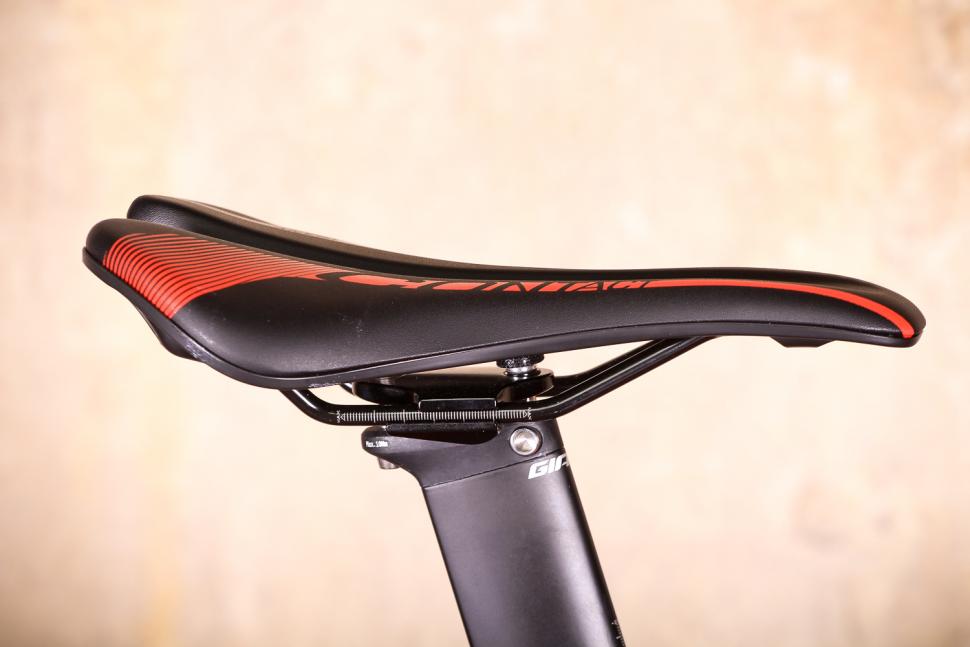
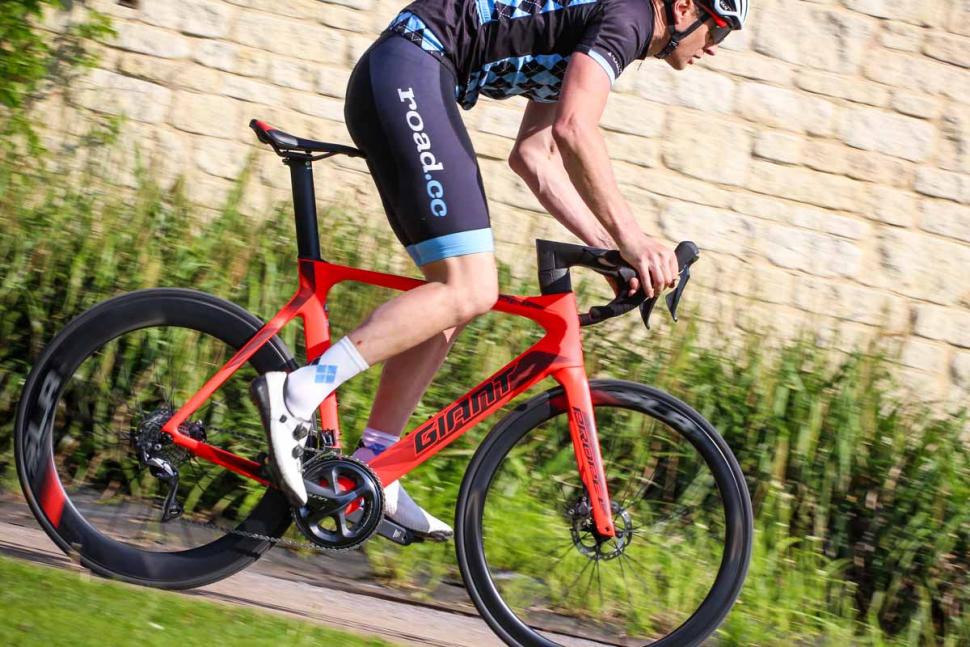
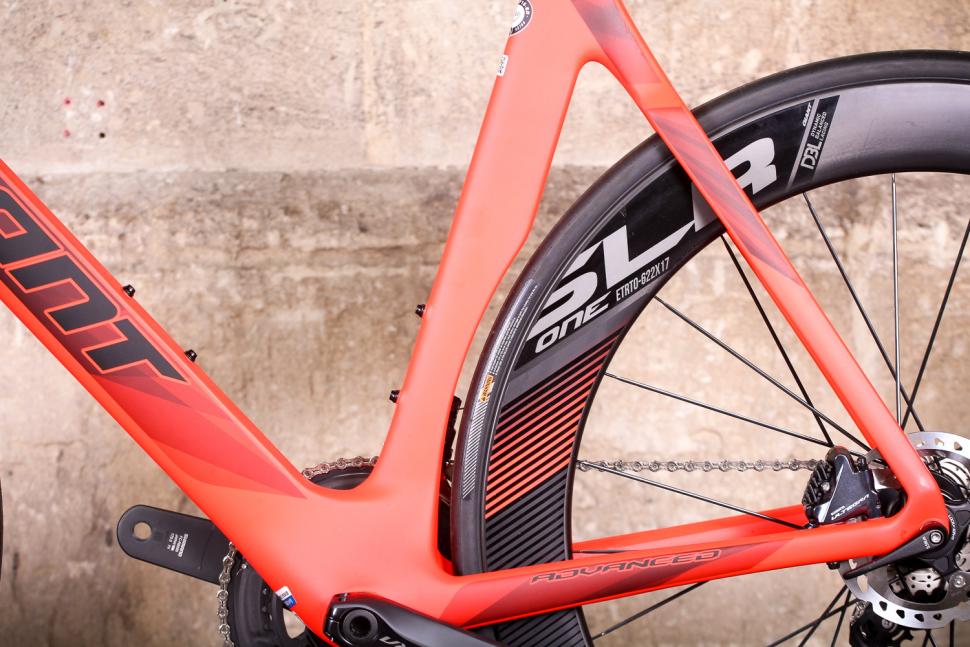

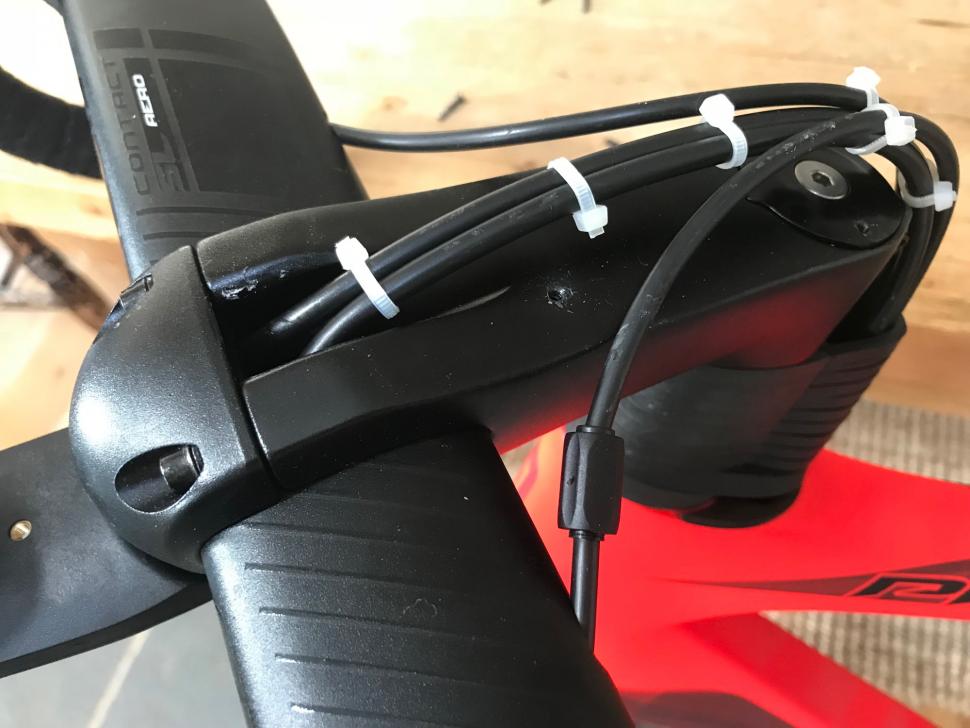

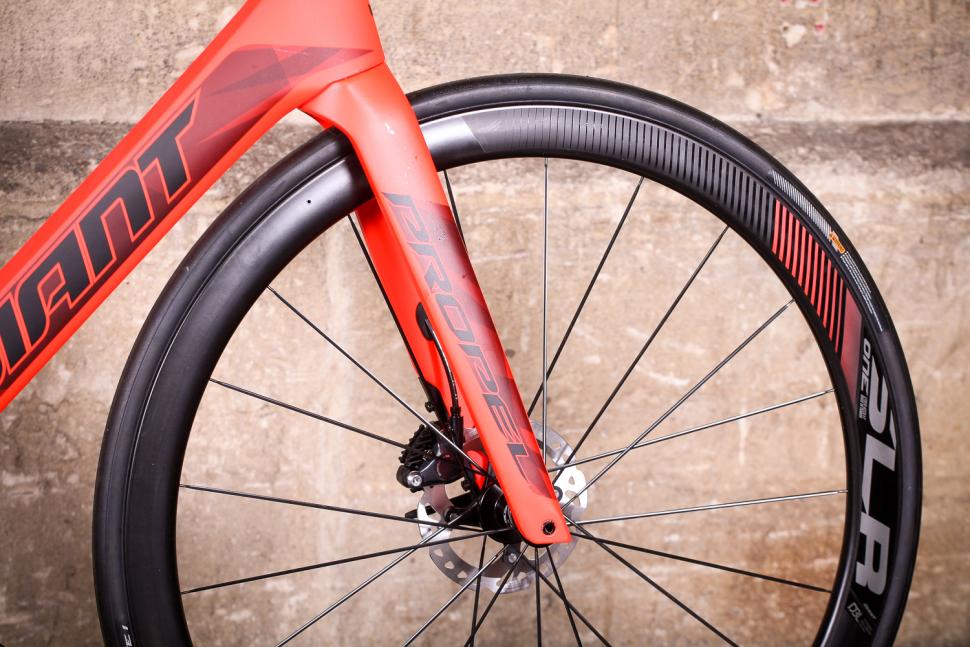

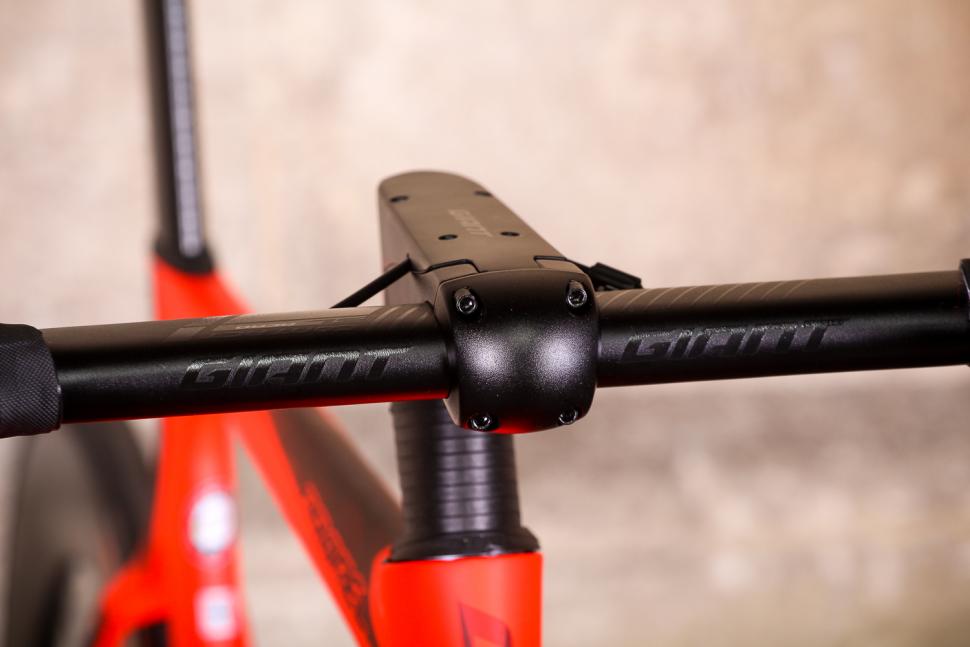
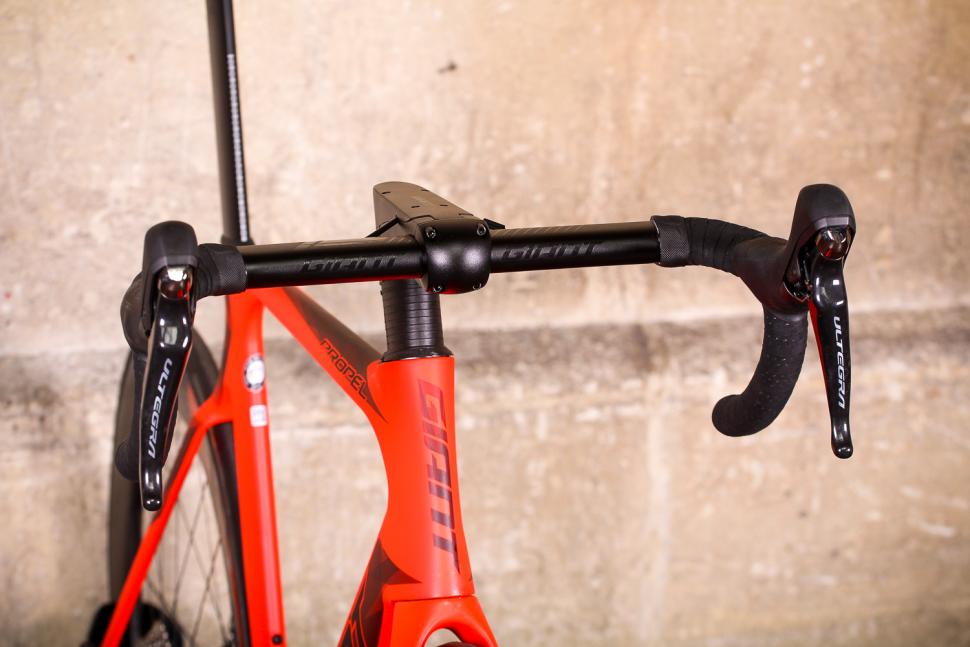
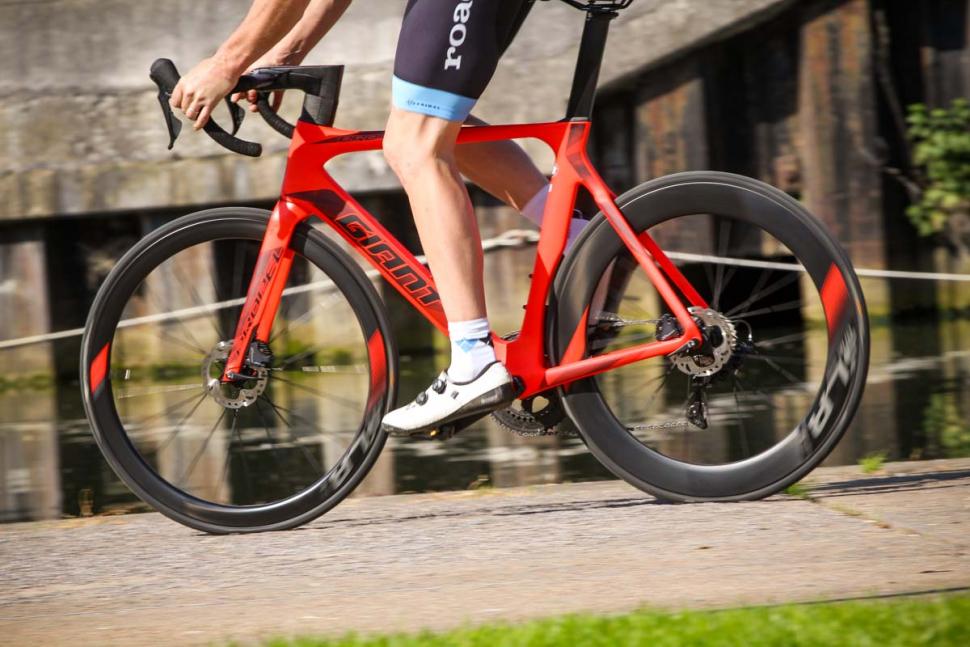



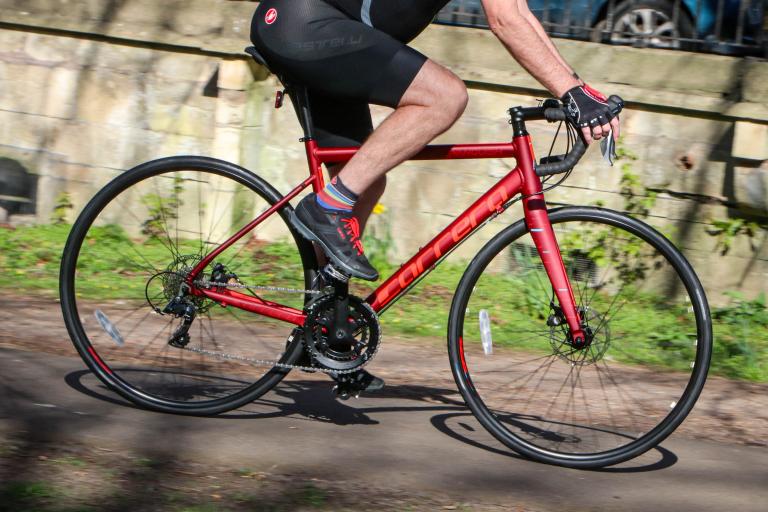

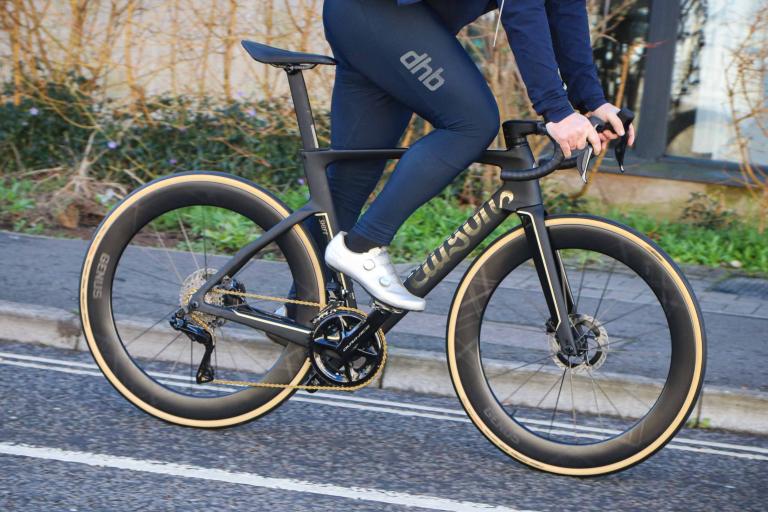
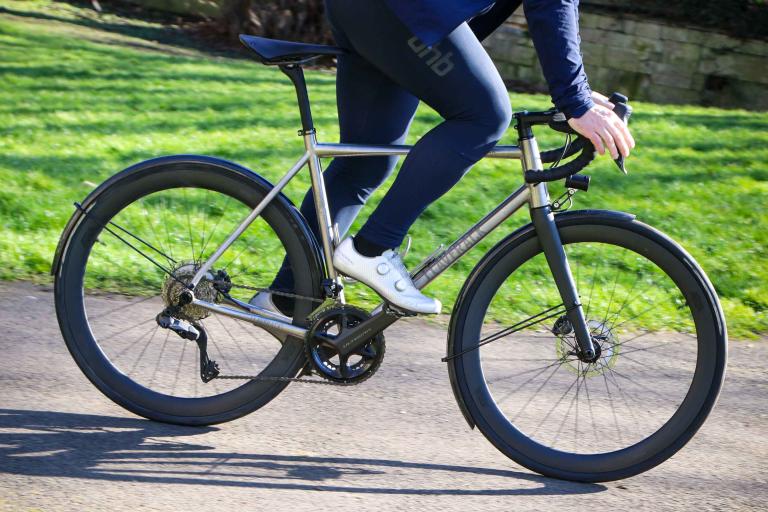
Add new comment
13 comments
Received my new propel
frame was damaged sent back for a replacement
now the flaps on the headset cover keep popping open . Apparently the cables are too long and push the flaps open
also 30 cassette really that’s coming off
front mech catches the chain
really disappointing
hopefully when sorted it rides like it reviews before I bought
Received my new propel
frame was damaged sent back for a replacement
now the flaps on the headset cover keep popping open . Apparently the cables are too long and push the flaps open
also 30 cassette really that’s coming off
front mech catches the chain
really disappointing
hopefully when sorted it rides like it reviews before I bought
Hi Mat,
A question regarding the frame size. You are 190cm tall and you tested the M/L size. As per the table provided by Giant I think you should be riding the XL frame size. I am 186cm tall and I'm looking into the L frame size. Which frame size would you recommend to me: M/L or L? Many thanks for your feedback.
Interested in the smaller rotors, Mat did you notice if the brakes were any more or less noisy in the wet?
I would have liked to down-size to smaller rotors to get them hotter quicker, in the hope they would squeel less. Also assuming smaller rotor = stiffer rotor which might help. Alas my frame is post mount only so can't do it, need to wait until I upgrade to flat mount.
The brakes on this bike weren't noisy, wet or dry. Well, not noisy noisy. Some sound, but not enough to get on your nerves.
Get the new model with Di2. I have the last model SL with Dura-Ace Di2 and whilst it’s a great bike there is no way I’d be buying an aero bike with exposed cabling and without disc brakes if I was looking now..
So ... I have an option this new model 2018 disc propel base model or the 2017 Advanced Pro 0, so with Di2 and 6800 ultegra and of course SLR0 wheels which are 55mm. Would people stil fancy this newer bike over that 2017 frame and spec? I am pretty keen on Di2 after a couple of spins with it. The disc I like too but not sure how "essential" it is. Kind of a trade off between Di2 and disc? I wonder what the benefit of the SLR0 55mm front and back are versus the SLR1 with 42/65mm. Apparently its jsut the hub but what do others think??
Thanks for thnking about it.
Someone's going to have a nasty accident with that stem...
ahmabawz!
Heavy disk bike is heavy, and looks only a mother could love. No thanks.
Well true but that's more because it's an aero focused disc bike with deep section wheels - you want a lightweight one try something like a Trek Emonda SLR disc (6.65kg).
3 grand
ugly
heavy
meh
Beautiful bike, wish it came with rim brakes too and with completely hidden cables.